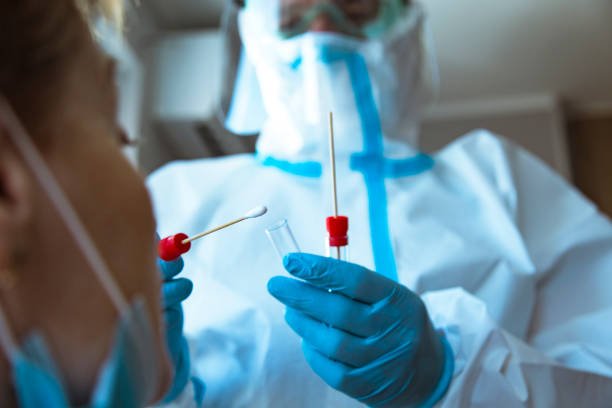PCR (Polymerase Chain Reaction) tests have become a common tool in diagnosing various infections, including COVID-19. While getting tested is important, understanding the results is equally crucial. Interpreting PCR test results can seem daunting, but with a little guidance, you can make sense of your health data. In this article, we’ll provide you with simple tips to help you understand your PCR test results effectively.
Understanding Positive Results
Confirmation of Infection:
A positive result indicates the presence of the targeted genetic material in your sample. For COVID-19, a positive result suggests that you have been infected with the virus.
Isolation and Quarantine:
If you receive a positive result for an infectious disease like COVID-19, it’s important to follow isolation or quarantine guidelines to prevent spreading the infection to others.
Consult a Healthcare Provider:
Reach out to a healthcare professional to discuss your positive result. They can provide guidance on managing your symptoms and determining the appropriate course of action.
Understanding Negative Results
No Detected Infection:
A negative result means that the targeted genetic material was not found in your sample at the time of testing. However, this doesn’t rule out the possibility of infection entirely.
Timing Matters:
PCR tests may give a negative result if the sample is taken too early in the course of an infection. If you’re symptomatic, consider getting a retest after a few days for a more accurate result.
Follow Health Guidelines:
Even with a negative result, it’s important to continue following health guidelines, especially if you expose to an infected individual.
Consulting a Healthcare Professional
Interpretation Expertise:
Healthcare professionals get training to interpret test results accurately. If you’re unsure about your results, don’t hesitate to consult a doctor.
Context Matters:
Your healthcare provider will consider your symptoms, medical history, and any potential exposures to provide a comprehensive assessment of your health.
Questions and Clarifications:
Don’t hesitate to ask questions about your results. A healthcare provider can address any concerns you may have.
Understanding False Positives and False Negatives
False Positives:
These occur when a test incorrectly indicates an infection that is not present. Factors like contamination can lead to false positives.
False Negatives:
These occur when a test fails to detect an infection that is actually present. Timing, quality of the sample, and the stage of infection can influence false negatives.
Retesting:
If you have reasons to doubt your result, discussing the possibility of retesting with a healthcare provider is a good idea.
What You Learn in This Guide.
Interpreting PCR test results requires a balanced approach to understanding the science behind the test and seeking guidance from healthcare professionals. Positive results signal the presence of an infection, while negative results may require further evaluation.
Consulting a healthcare provider like Reliable Testing for result interpretation is a prudent step to ensure accurate understanding. Remember that false positives and false negatives can occur, and context matters. By staying informed and seeking expert advice, you can navigate your health data with confidence.
FAQs Related to PCR Test Results:
1. What does a positive PCR test result mean?
- A positive PCR test result indicates the presence of the targeted genetic material in your sample, suggesting that you have been infected with the virus, such as COVID-19.
2. If I receive a positive result, what should I do next?
- If you receive a positive result for an infectious disease like COVID-19, it’s essential to follow isolation or quarantine guidelines to prevent spreading the infection to others. Additionally, consult a healthcare professional for guidance on managing your symptoms and determining the appropriate course of action.
3. What does a negative PCR test result mean?
- A negative PCR test result means that the targeted genetic material was not found in your sample at the time of testing. However, this does not entirely rule out the possibility of infection.
4. Can a PCR test provide a false-negative result?
- Yes, PCR tests may give a false-negative result if the sample is taken too early in the course of an infection or if the sample quality is compromised. If you are symptomatic and receive a negative result, consider getting a retest after a few days for a more accurate result.
5. What should I do if I have doubts about my test result?
- If you have reasons to doubt your PCR test result, it’s advisable to discuss the possibility of retesting with a healthcare provider. They can evaluate your situation and recommend the best course of action.
6. How can healthcare professionals help interpret PCR test results?
- Healthcare professionals receive training to accurately interpret test results. They consider your symptoms, medical history, and any potential exposures to provide a comprehensive assessment of your health. If you are unsure about your results, don’t hesitate to consult a doctor.
7. What are false positives and false negatives in PCR testing?
- False positives occur when a test incorrectly indicates an infection that is not present, often due to factors like contamination. False negatives, on the other hand, occur when a test fails to detect an infection that is actually present, influenced by factors such as timing, sample quality, and the stage of infection.
8. Is it necessary to continue following health guidelines even with a negative PCR test result?
- Yes, even with a negative result, it’s crucial to continue following health guidelines, especially if you have been exposed to an infected individual. PCR tests may not always detect the virus in the early stages of infection.
Read More: How Prevent STD/STI

